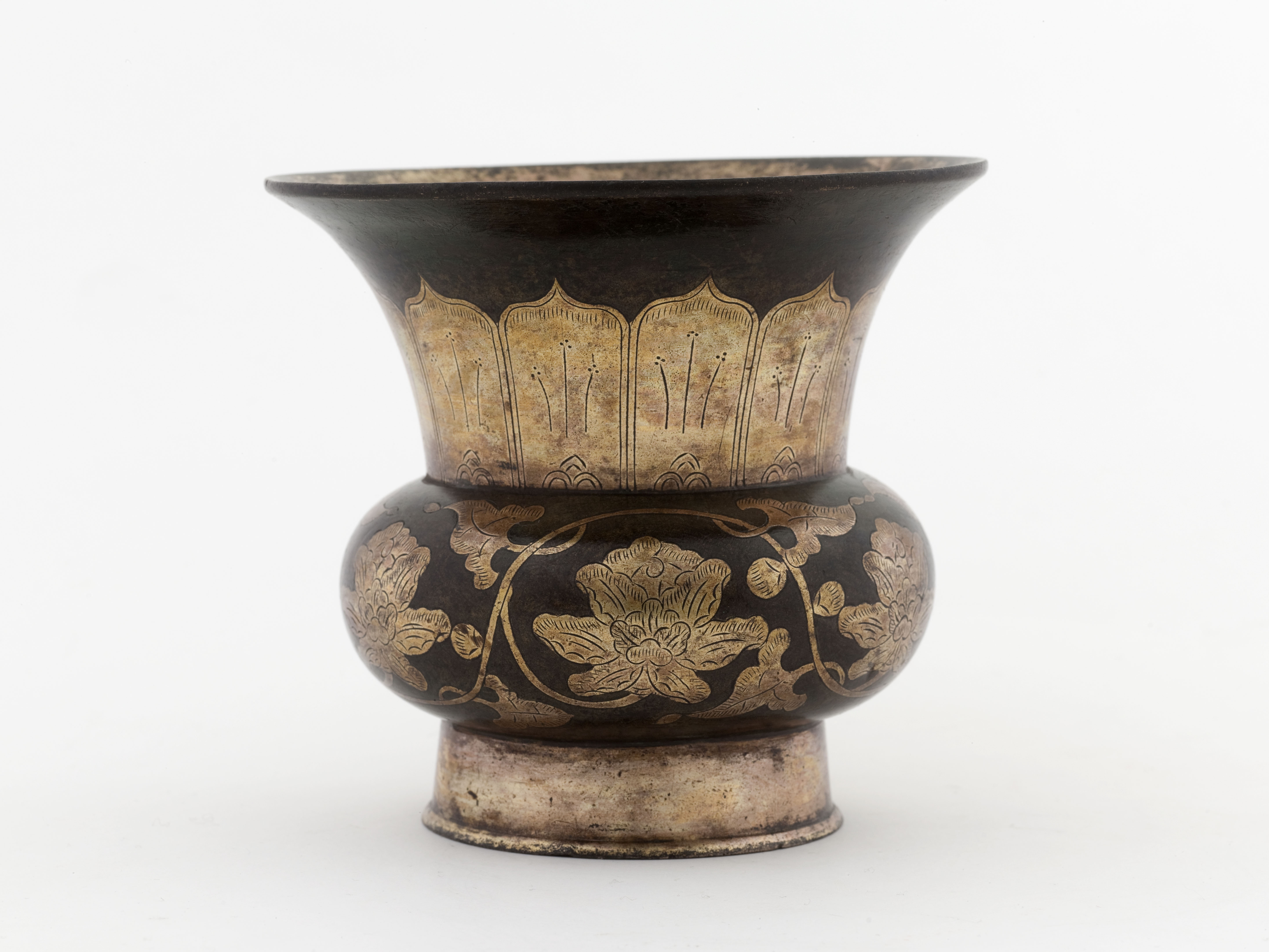
Vase en forme de zun 尊
Bronze, Fonte à la cire perdue, Dorure, Gravé = incisé
Vase
Legs : Cernuschi, Henri
M.C. 1018
The shape of this vessel is comparable to that of several ceramic works dating from the second half of the 15th century and first half of the 16th century. In its neck and slightly flared foot, it is perhaps more akin to those of the 15th century. While this type of object is often called a zhadou 渣斗 (spittoon), it is now widely thought to imitate the shape of the ancient zun vases.
Here, the gold is laid on a bronze coated with a very unctuous and particularly delicate golden-brown glaze. The desired effect is that of merged colours, a harmonious blend of gold and bronze. This could be considered a characteristic of certain ancient gilt bronzes; but numerous gilt bronzes from the late Ming and Qing periods play on colour contrasts, using a brilliant gold on a very dark brown bronze.
The style of the peony and foliage motifs are very similar to those incised on the breastplate of a statuette of a barbarian from the late Ming. In both cases, the undulating and pointed shape of the leaves is generally associated with the lotus – and not the peony. This is therefore quite an exceptional combination; I am only aware of specimens from the Song to Ming periods.